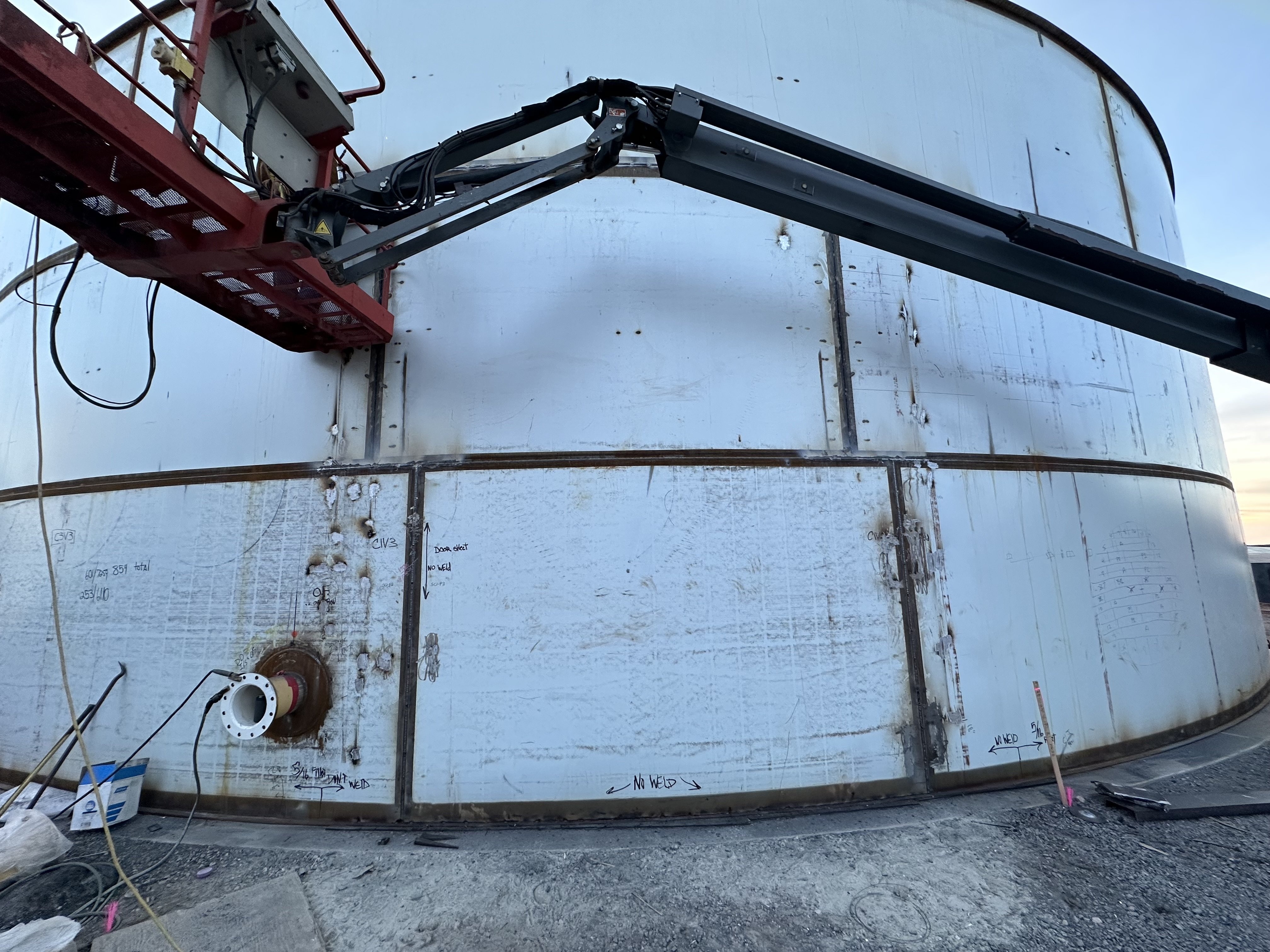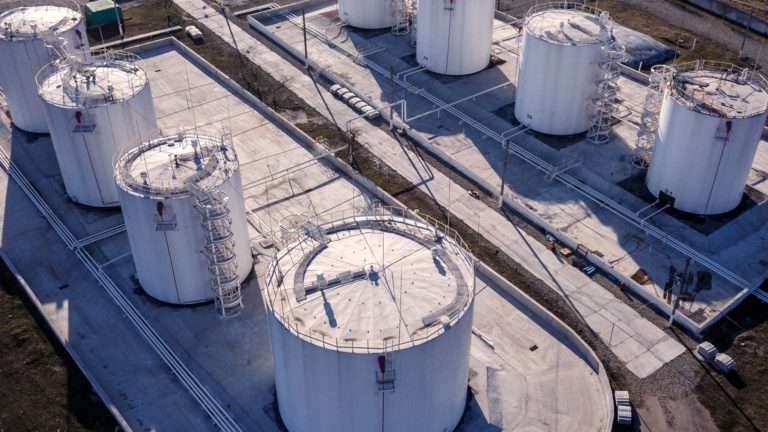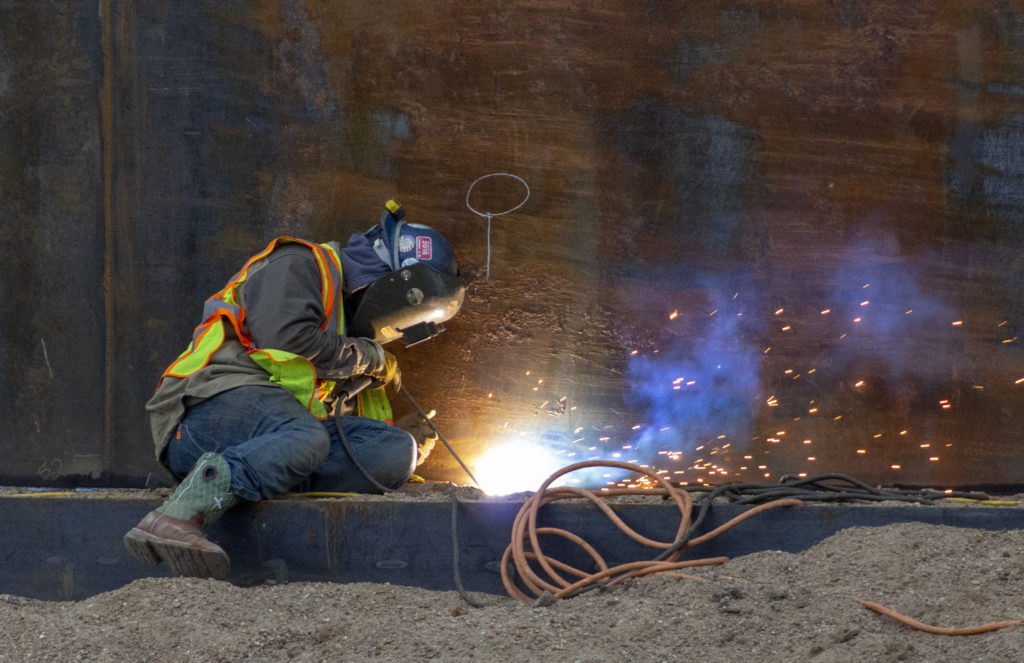The Essential Function of Container Welding Examination in Ensuring Structural Honesty and Safety Conformity in Industrial Applications
In the world of industrial applications, container welding evaluation arises as a pivotal element in guarding structural integrity and ensuring compliance with safety regulations. Utilizing a mix of techniques such as visual analyses and advanced screening methods, these assessments offer to identify and minimize prospective flaws before they rise right into substantial risks. The implications of these techniques expand past simple governing adherence; they fundamentally impact functional effectiveness and property long life. The complexities bordering the assessment procedure prompt a closer assessment of its approaches and outcomes, exposing layers of relevance that quality further exploration.
Significance of Tank Welding Assessment

Guaranteeing conformity with market standards and laws is an additional considerable element of container welding examination. Regulatory bodies mandate stringent standards for the building and construction and upkeep of tank, and extensive assessments help organizations stick to these requirements. Non-compliance can result in serious penalties, consisting of penalties and closures, further emphasizing the demand for extensive inspection protocols.
Moreover, tank welding assessment plays an important function in maintaining functional efficiency. In recap, the importance of storage tank welding inspection exists in its ability to guard public health, protect the atmosphere, and ensure compliance with regulative structures.
Secret Evaluation Methods
Effective container welding examination depends on a selection of vital methods that ensure complete analysis of weld top quality and architectural honesty. Among the most common methods are visual evaluation, ultrasonic screening, radiographic screening, and magnetic fragment testing - Tank Welding Inspection. Each approach uses distinct advantages in analyzing various facets of the weld
Aesthetic assessment functions as the very first line of defense, allowing inspectors to determine surface area flaws, irregularities, or disparities in the weld grain. Ultrasonic testing uses high-frequency acoustic waves to find inner problems, such as splits or gaps, offering a thorough assessment of weld honesty. This method is especially reliable in spotting concerns that may not show up on the surface.
Radiographic testing uses X-rays or gamma rays to create photos of the welds, disclosing interior suspensions and providing an irreversible record for future reference. This strategy is extremely effective for critical applications where the danger of failing need to be lessened.
Last but not least, magnetic bit screening is utilized to identify surface area and near-surface flaws in ferromagnetic products. By applying electromagnetic fields and great iron bits, inspectors can pinpoint gaps that might jeopardize the structural stability of the tank. With each other, these strategies form a robust structure for ensuring high-quality welds in industrial applications.
Compliance With Safety And Security Requirements

Regular examinations play a pivotal function in ensuring conformity by recognizing prospective failures or variances from prescribed requirements. Inspectors are educated to review weld quality, validate product specifications, and evaluate the overall structural stability of containers. Their know-how is important in making certain that welding processes fulfill the called for safety requirements.
Moreover, compliance with security click now criteria not just shields workers but also safeguards the environment from potential hazards such as leakages or disastrous failings. Organizations that focus on safety conformity are much better placed to reduce dangers, improve operational performance, and promote a culture of safety and security within their workforce. In recap, maintaining rigorous conformity with security requirements is important for the successful operation of tank welding activities in industrial settings.
Benefits of Routine Examinations
Routine inspections are integral to maintaining the structural stability and safety of bonded tanks. These evaluations offer a systematic technique to recognizing prospective issues or weaknesses in the welds, ensuring that any issues are resolved before they intensify right into considerable failings. By conducting routine evaluations, companies can find deterioration, fatigue, and various other forms of damage that might endanger storage tank efficiency.
Furthermore, regular examinations add to conformity with sector regulations and criteria. Following these guidelines not only mitigates lawful dangers but also enhances the organization's track record for security and reliability. Regular assessments promote a proactive security society, urging employees to acknowledge and prioritize the importance of devices stability.

Study and Real-World Applications
Instance researches and real-world applications illustrate the tangible influence of effective tank welding assessment practices. Following the execution of rigorous welding inspection protocols, consisting of visual and ultrasonic screening, the center identified critical imperfections in weld joints that could have led to tragic failures.
In a similar way, a water therapy plant applied a detailed evaluation program for its storage tank welding procedures - Tank Welding Inspection. By integrating non-destructive testing methods, the plant was able to discover early signs of corrosion and tiredness in weld joints. This timely intervention prolonged the lifespan of the storage tanks and ensured compliance with safety regulations, thus guarding public health and wellness
These study emphasize the value of regular and systematic container welding evaluations. By prioritizing these techniques, sectors can mitigate threats, improve structural stability, and guarantee conformity more with safety standards, eventually resulting in boosted operational performance and reduced responsibilities.

Final Thought
To conclude, tank welding examination is a crucial part of preserving structural honesty and safety in commercial applications. Utilizing different evaluation methods ensures early discovery of prospective problems, thus protecting against catastrophic failings. Adherence to security criteria further enhances functional integrity and compliance with governing needs. Eventually, regular assessments not only protect public health and wellness and the atmosphere yet additionally add to the long life Click This Link and effectiveness of crucial properties, emphasizing the essential role of this practice in industrial procedures.